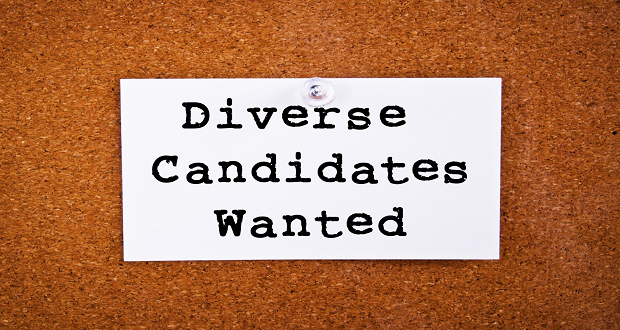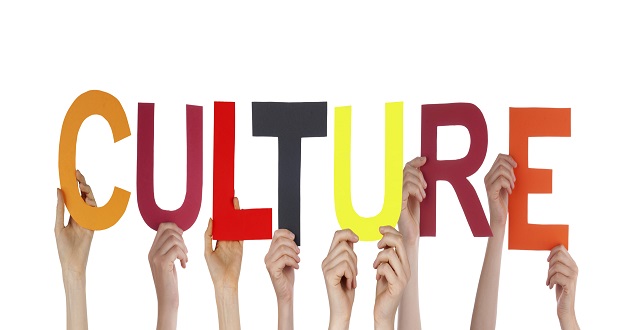
Its 2019, and at this point, most people probably know that language matters. We see fights over it every day on Twitter, where a poorly-timed, misinformed or maliciously-typed 288 characters can ruin someone’s career, create concern about the state of our democracy or catapult someone into a spotlight they never wanted (or perhaps they did). There are a million cliché things I could say about the power of words, but I doubt I need to – you already know. Words have the power to inspire, to shut down, to create and overcome conflict (okay, sometimes clichés are just irresistible), but perhaps most importantly, words can invite us into alternative imaginations, new possibilities for how the world could and should look.
Words have the power to inspire, to shut down, to create and overcome conflict, but perhaps most importantly, words can invite us into alternative imaginations, new possibilities for how the world could and should look. Click To TweetBut let’s cut through the ideal, the theoretical – let’s get practical. How do we build an inclusive vocabulary for our workplaces? How do we build a shared vocabulary around DEI work? Below, I’ve listed four key considerations for building a language of inclusion in the workplace and key strategies for each.
How we talk about diversity matters. Diversity just is. Diversity is the mix of people and all their characteristics that exist in a space. “Diverse” is not an adjective for people (e.g. “diverse hires”) because it doesn’t describe one type of person. Using it as such perpetuates the notion that diversity is about “those people”—whoever is in the out-group or marginalized group—and not about everyone.
“Diverse” is not an adjective for people (e.g. “diverse hires”). Using it as such perpetuates the notion that diversity is about “those people”—whoever is in the out-group or marginalized group—and not about everyone. Click To TweetDiversity exists in every room in some capacity, so we should get specific about the kinds of diversity we may be seeking to foster – perhaps a company is lacking in racial diversity at senior levels – and we should be clear about the ways in which some dimensions of diversity are products of others. For example, fostering diversity of thought, commonly acknowledged as necessary for innovation, requires us to foster racial, ethnic, gender, geographical diversity, etc. because diversity of thought is a product of diverse backgrounds and experiences.
How we talk about diversity, equity and inclusion work matters. At The Winters Group, we talk about our educational sessions in terms of “learning experiences” rather than “trainings,” and this choice is intentional. “Training” denotes that we are instructing people on how to use specific skills to do a job. And while we do consider cultural competency a skillset, our job is not so straight forward.
Cultural competence is a skillset, but it’s also a journey. It’s a long-term, developmental journey that requires time, practice, and continuous engagement with ourselves and with others. The “skillset” we share in DEI work is ultimately about being able to value and feel empowered as our whole selves and do the same for others, so our job in DEI is to create experiences in which people feel seen and heard, challenged, connected, transformed. The word “training” can undermine the length and commitment this process requires.
How we talk about and within our organizations matters. We’ve often talked about the mythical language of meritocracy on the Inclusion Solution, but what about the more subtle organizational norms that can inadvertently create cultures of exclusion? Words and phrases like “cultural fit” and “executive presence,” while seemingly universal, are actually dripping in subjective organizational norms. These vague descriptors could have endless behavioral interpretations, leaving those who use this language vulnerable to misinterpretation or limitations on the kinds of candidates who may be good for the organization or leadership.
Words and phrases like “cultural fit” and “executive presence,” while seemingly universal, are actually dripping in subjective organizational norms. Click To TweetDescribing someone as a “cultural fit” just implies that the person assimilates well into the current culture of the company, rather than considering that “adding to” or “shifting” culture might produce greater results. Studies show that organizations rely most heavily on whether someone has gravitas— “it’s the intangibles!”— when judging executive presence, creating an ever-moving finish line that is especially difficult to cross for those whose styles don’t reflect the existing leadership models within an org.
How we talk about each other matters. Here are just a few tips when talking about people in the context of diversity and inclusion (or just within the context of daily life):
- Use person-first language. Instead of saying “disabled person,” say, “person with a disability.”
- Allow people to self-identify as much as possible. Don’t assume based on looking at someone or knowing someone in a workplace setting, that you know how someone prefers to be identified. For example, on surveys, on nametags/name tents, in email signatures, etc., provide people with the opportunity identify their gender pronouns. (e.g. she/her/hers; they/them/theirs; he/him/his)
- Use accurate identifiers for marginalized or underrepresented groups rather than using “minority,” as in “minority leaders.” Not all marginalized groups are numerically in the minority, and the word assumes that power automatically comes with having a numerical majority, which is not necessarily true. Use descriptors or terms like “marginalized group” or “underrepresented group” to speak to the social group power dynamics at play.
- It’s okay to use “people of color” as a term to describe those who belong to non-white groups (in the U.S. context) but use it with caution and with attention to nuance. This term works well to denote the common experience of being marginalized and oppressed under white supremacist structures that all non-white racial and ethnic groups in the U.S. have faced in some way. However, there is a great diversity of experiences and histories under that umbrella, and we must pay attention to the particularities as much as we do to the commonalities. For example, the acronym BIPOC (Black and Indigenous People of Color) can be used to describe or denote the particular experiences of Black and Indigenous people, who often experience the least amount of protection in our society still, particularly Black and Indigenous women.
- Stay away from gendered language. A job description should not use the pronoun “he” to describe the ideal candidate, rather “them,” “they,” “this person/candidate.” We should also avoid using terms like “guys and gals,” when referring to groups and instead use gender-neutral language like “folks” or “people” or even “you all” or “y’all” (yes, I am Southern).
This list is not exhaustive – it is just a starting point. Ultimately, it is meant to give you some practical tools and suggestions for speaking to and about people, organizations and this work in a way that communicates your commitment to the end goal – equity. Consider using this information to revisit your internal and external communications, policies, manuals, marketing materials, and meeting norms. This is practical stuff that has larger, systems level implications. Language matters, and that’s good news, because our words are completely within our individual control and sphere of influence. This is a realm in which we have all have power – I encourage you to use yours.



















Excellent post!